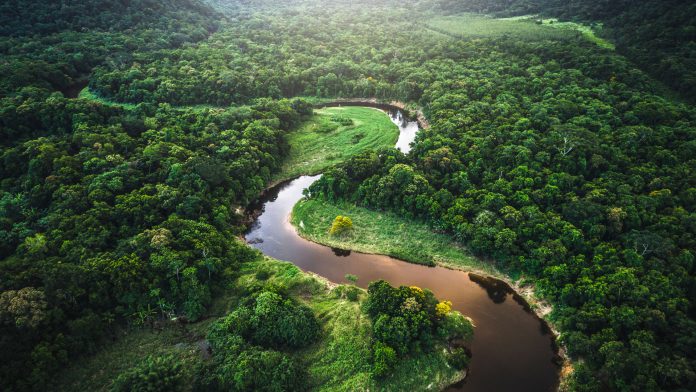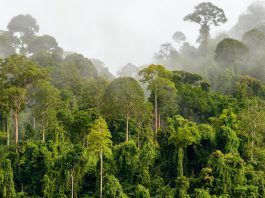A large part of the Amazon rainforest is approaching a tipping point where it could soon become a savanna-type ecosystem, according to new research.
The research, which is published in the journal Nature Communications, used computer models of the Amazon rainforest and data analysis conducted by the Stockholm Resilience Centre.
Lead author Arie Staal, formerly a postdoctoral researcher at the Stockholm Resilience Centre, said: “In around 40% of the Amazon, the rainfall is now at a level where the forest could exist in either state – rainforest or savanna, according to our findings.”
Parts of the Amazon rainforest are currently receiving less rain than previously, a trend that is expected to worsen as the region warms due to rising greenhouse gas emissions. Staal and colleagues focused on the stability of tropical rainforests in the Americas, Africa, Asia, and Oceania. With their approach they were able to explore how rainforests respond to changing rainfall.
“By using the latest available atmospheric data and teleconnection models, we were able to simulate the downwind effects of disappearance of forests for all tropical forests. By integrating these analyses over the entire tropics, the picture of the systematic stability of tropical forests emerged,” says Obbe Tuinenburg, former assistant professor at the Copernicus Institute of Utrecht University and visiting scientist at the Stockholm Resilience Centre.
Simulations of tropical rainforests
The researchers ran the simulations of areas without forest in the tropics across Africa, the Americas, Asia, and Australia. They watched forests emerge over time in the models. This allowed them to explore the minimum forest cover for all regions.
Staal said: “The dynamics of tropical forests is interesting. As forests grow and spread across a region this affects rainfall – forests create their own rain because leaves give off water vapour and this falls as rain further downwind. Rainfall means fewer fires leading to even more forests. Our simulations capture this dynamic.”
The team ran the models a second time, this time in a world where rainforests entirely covered the tropical regions of Earth. This is an unstable scenario because in many places there is not enough rainfall to sustain a rainforest. In many places the forests shrank back due to lack of moisture. Staal says: “As forests shrink, we get less rainfall downwind and this causes drying leading to more fire and forest loss: a vicious cycle.”
Finally, the researchers explored what happens if emissions keep rising this century along a very high-emissions scenario used by the Intergovernmental Panel on Climate Change. Overall, the researchers found that as emissions grow, more parts of the Amazon rainforest lose their natural resilience and become unstable. The team suggest that these regions are more likely to dry out and switch to become a savanna-type ecosystem. They note that even the most resilient part of the rainforest shrinks in area. In other words, more of the rainforest is prone to crossing a tipping point as emissions of greenhouse gases reach very high levels.









